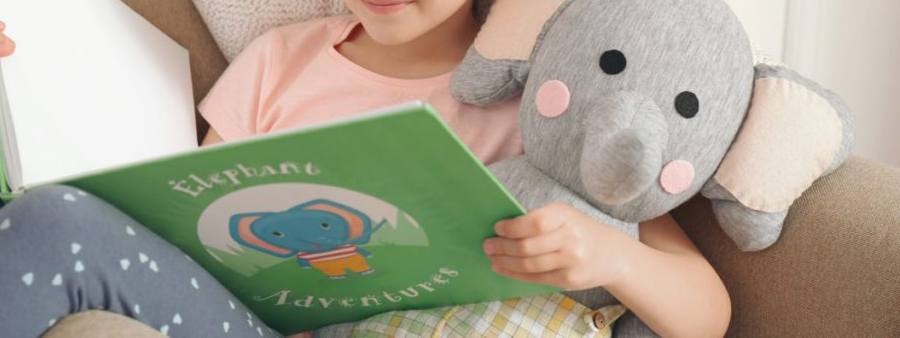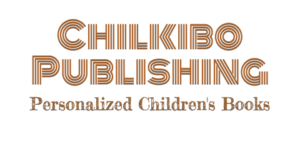There are many ways to teach children about the world around them, and one of those ways is through books. A child can learn about alphabets, numbers, colors, shapes, animals, good behavior, kindness, friendship, and sharing through books. That’s why it’s good to make reading an integral part of a child’s life, from infancy and even well into adolescence.
Some books can also be considered toys because of how interactive, amusing, and enjoyable they are. Books are not all about reading and absorbing information – they can be fun too! A book can be a toy if it can provide your child with something to play with and find joy and excitement in.
We will talk about why books can be considered good toys for your child, and what types of books will provide creative learning opportunities. Then we will discuss the benefits of play and how the lack of it may negatively affect your child’s development. Let’s start!

Kinds of Books That Can Be Toys
Books that encourage the reader to take on a more active role in reading and learning can be considered good toys. By incorporating play, they help make learning a fun and positive experience for your child. Learning isn’t isolated to feeding information to your child. It becomes an interactive process where your child is up front and center.
Here are some examples of books that may be considered toys:
- Pop-up books. These kinds of books have movable elements that your child can manipulate. The moveable parts may be texts or parts of an illustration. These books work well in instantly grabbing a child’s attention.
- Sensory books. These books encourage children to explore with their hands. They use elements such as sandpaper, glitter, corrugated paper, felt paper, faux fur, or mesh in introducing the concept of textures to your child. They will spark your child’s curiosity and encourage him to explore new things.
- Sound books. By sounding out certain words, these books can help build your child’s vocabulary and help him understand the value of communication. These can also help your child understand what specific noises sound like, such as the moo of a cow or the bark of a dog. Sound books will help make learning exciting and fun.
What Makes a Book a Good Toy?
Not all children’s books should be considered toys. Some books are primarily meant for reading, while there are books that are intended to engage all five senses. Children’s books that invite a child to see, touch, smell, hear, and explore different elements can be considered toys.
Some children’s books have broken free of tradition and embraced versatility and creativity. Where once there were just board books with their hard, sturdy pages, these days, there are fluffy, colorful books that teach children about textures.
Where once there were only book pages filled with descriptive words to capture a child’s imagination, now there are pop-up books that allow children to see how a barn, chicken coop, or lake looks up close.
A good toy differs from one child to the next. A specific toy may work wonders with one child but may be deemed uninteresting by another. A good toy should be able to stimulate a child to play. It should encourage a child to do something – push, pull, press, twist, or tap.
What makes a book a good toy is its ability to engage a child completely. It should first and foremost be sturdy so it can withstand a child’s enthusiasm, excitement, frustration, and distress. It should also be simple yet challenging enough for a child to want to try and give it his best shot.
Here are other factors that may make a book a good toy for your child:
The Book Is Age-Appropriate
Your child’s interests will continue to change as he grows. He might be into colors and shapes as a baby. Once he becomes a toddler, shapes, textures, and puzzles may suddenly become his favorites. Adapt to these changes with age-appropriate books so that he is continually excited and challenged.
The Book Nurtures the Imagination
A nurtured imagination will help fuel your child’s creativity and problem-solving skills. Go for books that do not just teach concepts upfront. Pick the more exciting learning opportunities instead.
Some books teach in innovative ways – through stories, illustrations, puzzles, or games. These will help engage your child and ensure he remembers the lessons longer.
The Book Helps Strengthen Motor Skills
Fine motor skills involve using smaller muscles in the hands and feet. Grabbing, pressing, using the pincer grip, and holding are some examples. On the other hand, gross motor skills include lifting the head, crawling, sitting, or jumping. These involve using large muscle groups in the arms, legs, hands, feet, and torso to make bigger movements.
The Book Improves Your Child’s Dexterity
Books that encourage children to participate in the reading process help make learning a fun activity. Young children will also benefit from these opportunities to improve their dexterity.
Books that encourage them to do simple tasks like turning the pages or lifting covers will help develop their skills in later doing simple tasks such as holding their bottle, climbing the stairs, or feeding themselves.
The Book Enhances Communication Skills
Books generally help young children learn about words and understand how these can be used to express themselves. Some books take this further by making reading a more interactive process.
Is this square fuzzy or smooth? Is the cat happy or sad?
By making kids assess situations and come up with their own conclusions, such books encourage them to use words to express themselves.
The Book Enhances Your Child’s Social Skills
Social skills are just as important as standard ‘book learning.’ One way of teaching young children social skills and how the world works is through books. They can learn about friendship, sharing, or forgiveness through reading about those things. You can show them why it’s essential to be kind to others by reading stories with them.
The Book Aids in Promoting Cognitive Function
Children’s cognitive development pertains to all of the following abilities:
- Processing information
- Analyzing situations
- Making comparisons
- Understanding cause and effect
- Remembering important details
Books that encourage children to think, analyze, and make decisions will help hone these cognitive skills. Doing so will prepare them for when they face similar real-life scenarios.
The Book Helps Your Child Build Self-Confidence
New things may sometimes feel scary and overwhelming to children. However, when they are encouraged to give new things a try, especially when they succeed, their confidence will be given a major boost. Books can be a great way to boost their self-confidence and help them realize that new things may eventually become familiar.
Benefits of Playing With Toys
Play is an integral part of a child’s development. Playing isn’t merely about entertaining a child, whiling away the time, or letting a child have fun. It actually plays a vital role in brain development, emotional stability, and social maturity. A simple game of peek-a-boo, for instance, sharpens a child’s motor, communication, and problem-solving skills.
Lack of play and under-stimulation may lead to long-term consequences. Your child’s physical, mental, and emotional well-being may be significantly affected if he is not given sufficient time for play. Playing allows him to have fun while learning more about himself and his world.
Final Thoughts
Playtime can be a fun and learning experience for your child. Educational toys such as books will let him learn and have fun at the same time. Books can help establish a positive attitude toward learning, and this will affect how your child will handle new experiences. A positive mindset toward learning will broaden his opportunities as he grows.


